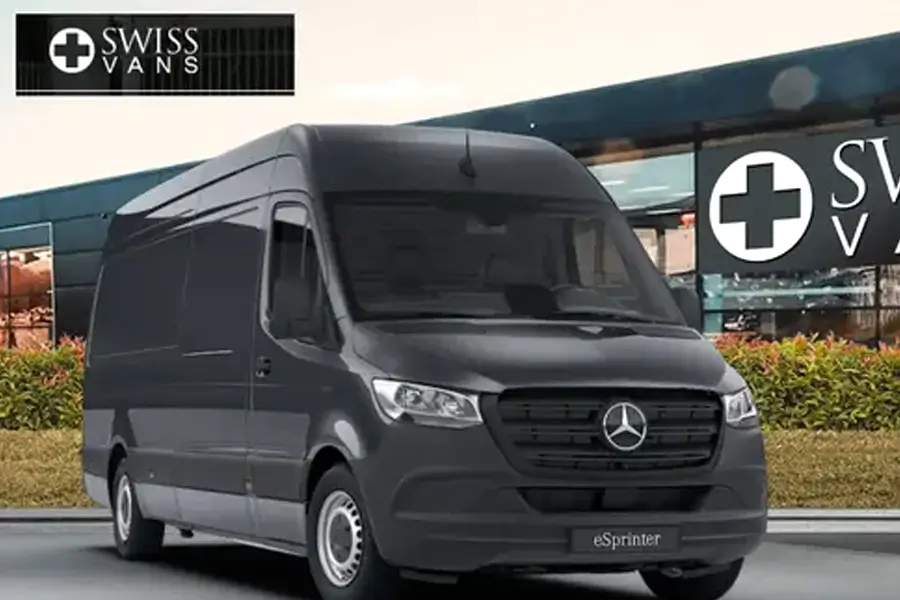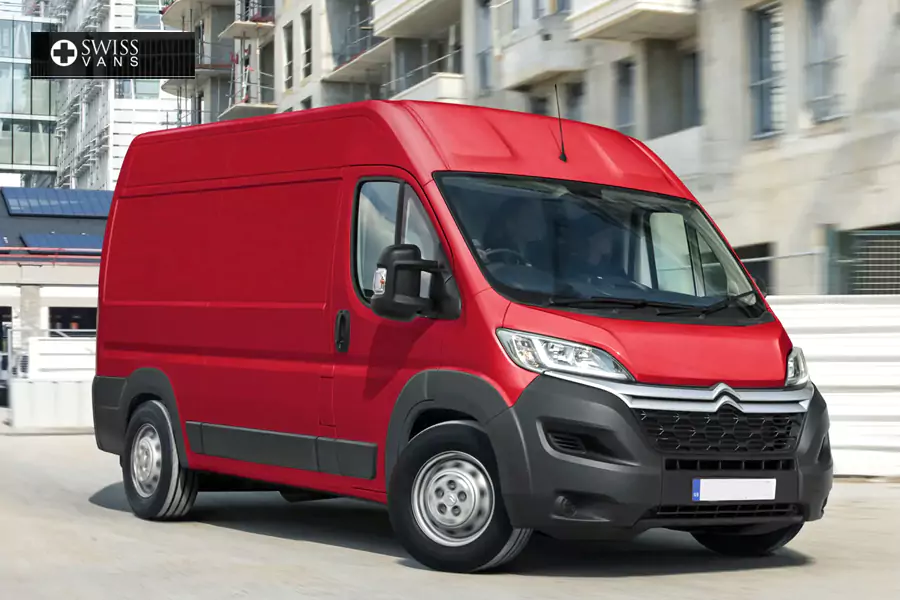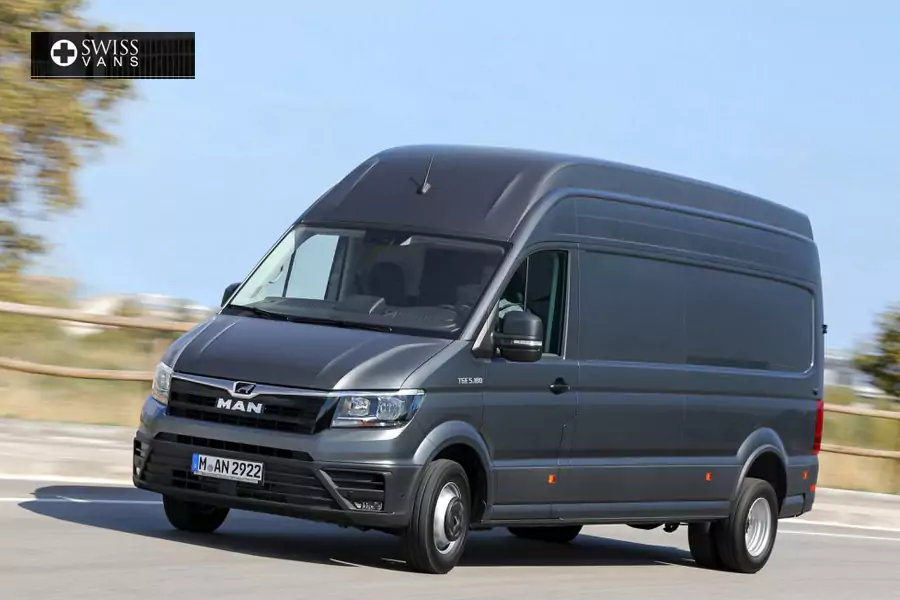Electric VW Crafter

- Motoring on your terms
Lease type:
£599.00 +VAT per month
Electric VW Crafter Lease – £POA
Monthly Payment ex VAT
Call Us
ENQUIRE
Get your personalised quote
Call 0118 338 3799
Request a callback
Vehicle Highlights
Volkswagen e-Crafter, VW’s Large Van
The Details
The electric Crafter has a 134bhp motor. Its 35kW lithium-ion battery is hidden beneath the floor, so not only is it out of site, but it also lowers the van’s centre of gravity for extra stability. There’s no gearbox — no worries about wear and tear — as torque is provided by the motor. The van’s speed is limited to 56mph, but as this really is a vehicle for town or city driving, you won’t need a lot of speed. That speed restriction also allows the van’s range to be reasonable enough to get you through the day without any worries.
The e-Crafter takes 5.5 hours to charge from a standard electric vehicle (EV) wall charger (7kW), but it’s possible to rapid-charge the battery on a 45kW charger to 80% in 45 minutes. If you want to go all the way to 100% on a rapid charge, it’ll be another 20 minutes.
The interior of the electric Crafter is identical to that of the normal, diesel-engine VW Crafter. One extra perk though is that the driver benefits from a heated seat, which apparently is a clever way to save on heating — and therefore range — in electric vans. If your seat is warmer, the rest of the van can be cooler without you feeling uncomfortable.
The Numbers
3
The standard payload is 970kg on van with a GVW (gross vehicle weight) of 3500kg / 3.5 tonnes, but VW also makes the e-Crafter in higher-GVW variants that can give you a maximum payload of 1750kg. Which is a lot!
The e-Crafter’s battery comes with a decent warranty from Volkswagen, and it should last for multiple charges, years, and miles before it needs to be replaced. Resale value on these electric vans is likely to be high; they’re only going to become increasingly desirable — and necessary — as more and more cities ban diesel vehicles. As there aren’t really any petrol large vans being made at the moment, electric is definitely the way to go.
If you’re interested in the VW e-Crafter or you’d like more information, give our friendly sales team a call to discuss your situation and requirements. And as always at Swiss, we have great offers on cash sales or on VW e-Crafter finance arrangements and VW e-Crafter lease deals. If you feel though that you’re not quite ready to make the move to electric, you could always consider another large van like the “normal” VW Crafter, the Renault Master, Citroen Relay, or SAIC Maxus Deliver 9. Whatever you choose, we’ll do what we can to help get you — and your cargo — moving. Electric Van Information
Electric Van Range
- Anything from around 60-150 miles: this depends on things like speed, temperature, what else the van is doing beyond just driving. Manufacturer stated mileages are often between 100-140.
- Using equipment such as the radio, heater, air-conditioning, windscreen wipers, etc., uses energy and reduces range, so bear that in mind before you make it too toasty in the cab!
- As time goes on, like with any battery, capacity is reduced. However, there are hopes that electric-van battery prices will fall in the long term, so by the time your van needs a replacement, things should be cheaper. At the moment, prices are kept high due in part to the scarcity and costliness of lithium and cobalt — essential battery materials — but as recycling technologies improve, costs should decrease.
Electric Van Charging Points
- You can join clubs online that give you access to a growing network of charging points in cities, at motorway services, and at shopping centres. Some electric vans can fast-charge to 100% in around an hour. Have a look at Zap Map to find your nearest and fastest charging station.
- You can also get a home charger, but as these are lower power, they take longer: often around 6 hours. Still, these home chargers can easily charge up your van overnight. Bear in mind that charging via a standard mains adapter can take up to 20 hours, so it’s certainly not a bad idea to consider a home charging station.
- There are government grants available for home chargers and also for the installation of chargers (around 22kW) at businesses, etc., so that’s definitely something that’s worth looking into.
- And if you can’t get a grant to install a fast charger at your workplace, we can help! Swiss Vans can potentially finance a business charger to help you give people an additional reason to visit your business.
The Good Things
- In an electric van, you can go where other plumbers, heating engineers, couriers, and builders fear to roll: diesel-free zones.
- More charging stations are being added to the network every day, and these are starting to appear on sat navs, Google Maps, etc.
- Because battery materials like cadmium, lithium, and cobalt are rare, and electric vans have no transmissions or combustion engines to wear out, resale values remain high. Although battery performance and ability to hold charge will deteriorate after, say, 1000 charge cycles, the cost of new batteries is expected to fall substantially.
The Future
Electric Chargers for Workplaces and Businesses
We think these workplace EV chargers are a great idea. They’re usually 22kW, subject to a survey. You’ll need to decide whether or not you’d like to allow the public to use your charger. If so, you can make money and draw in customers. Grants are sometimes available for these chargers, so you should be able to claim back most of the costs.
Electric Van Chargers for the Home
There are government grants available for home chargers too. And you don’t have to worry about whether or not you’ll allow the public to use them! Some people install a workplace charger and a home charger; that’s a great idea if it’s practical / affordable for you, so we’d definitely advise you to explore all of your options. Home chargers tend to be around 7kW; that’s the most you can have on a home electricity supply.
Electric Charger Relativity
- Standard mains adapter: 3kW
- Home charging unit: 7kW
- Workplace charger: 22kW
- Rapid charger: 45kW
- Petrol Station charger: 150kW
7 Ways To Finance Your Van
Most of our competitors are leasing franchises. Their vans are usually purchased by the hundred; they may have sat on the lot for a while by the time you come along. These franchises tend to prefer contract hire as it locks customers in with them for longer. However, here at Swiss, we work with banks. We’re not tied in to any one plan, so we can offer you a wider array of options. Our vans are fresher and our deals are better as there’s no middleman franchise taking a cut.
Each of the following finance methods is tax deductible. It’s important to remember that, unless your insurance policy provides “new for old” cover, you will need a GAP insurance policy in case the vehicle gets written off. More on this at the bottom!
- Hire purchase: VAT down or VAT deferred. HP is a great way to actually buy a van. If you’re VAT registered, you can claim the whole VAT amount back within three months.
- Contract Hire: Bear in mind that there is a credit check with contract hire even though many people believe there isn’t. Contract hire is more popular on cars than vans, and it’s better for large fleets. In fact, it doesn’t offer any advantage for fleets of fewer than 10. (If you want to change more than 10 vehicles in one go, then please get in touch.)
- Lease purchase: As some manufacturers offer deals that can’t be used with lease purchase agreements, this may not be the best option. It’s similar to hire purchase as you own the vehicle at the end of the contract, but different in that there’s a large “balloon” payment at the end to help keep monthly payments lower. VAT-registered customers can claim back in the following quarter if they pay the entire VAT amount as the deposit. Lease purchase can be a great option for businesses if, for example, you want a T6.1 to keep and convert to a motorhome later on. Sometimes pre-registered vans are cheaper, so do ask us about what we’ve got available.
- Finance Lease: By far the most popular finance method as it attracts the lowest payments. Finance leases also attract the largest discounts from manufacturers. Another benefit of this method is that you can fit accessories to the van while you have it.
- Operational Lease: An operational lease is just like a finance lease apart from that you can hand the vehicle back at the end. Some of our Mercedes vans are like this.
- Asset Finance: We can finance many products, not just vans.
- Credit Limit: Pre-approve your van purchases 90 days in advance. This can be very useful if, for example, you have a contract tender.
GAP Insurance
If the vehicle is written off, your normal insurance may not cover everything you owe on your finance agreement. You could end up having to buy an older, cheaper van just to achieve the same monthly payments. A GAP insurance policy can help. For more information, please see our GAP policy page. And to buy a GAP insurance policy, you can click here
I needed a commercial vehicle for private use as I'm not self employed and therefore paying the VAT upfront is quite a chunk of money to loose so needed it to be wrapped up in the monthly repayment. I'd already tried several other companies before Swiss Vans and non of them were interested. I'd pretty much given up and was looking at 2nd Hand vans until I came across Swiss Vans advert on Facebook. I sent a message (with very low expectation) and the next day I was contacted by Tom Jones (yes, a Welshman called Tom Jones who sells vans...!!!). Tom is the first person that actually took the time to listen to what I needed and how I needed it work. He went away and came back a couple of hours later and explained that initially this wasn't going to be easy to achieve but to leave it with him and that he'd call me the next day. To be honest, I didn't think I'd hear from him again but true to his word he called me the next day and said that he had it all worked out, all agreed and all in place ready to go. Tom fired over the paperwork, I paid the small holding deposit and a few weeks later the vans been delivered and completely exceeded my expectations.
I'm a great believer that 'People buy People', yes Swiss Vans are truly excellent and I'd go as far as to say that in my experience, they're better than the rest but like all other companies they're only as good as the people they have working for them. Tom - I can't thank you enough, you're a credit to Swiss Vans, and Swiss Vans - you're outstanding.








